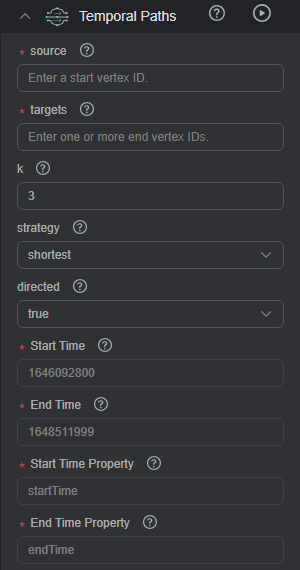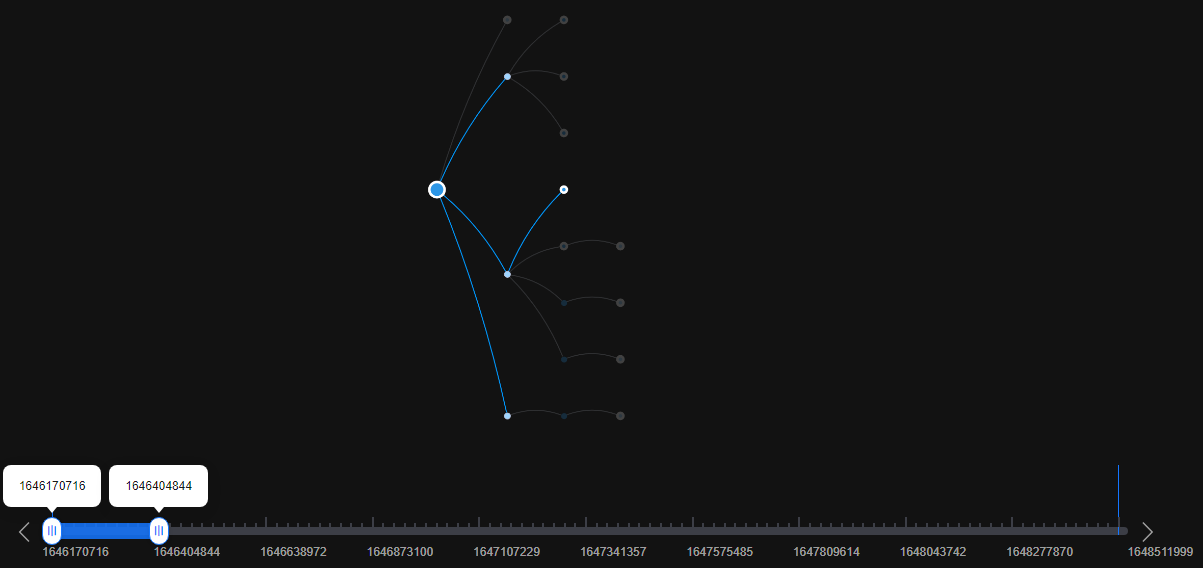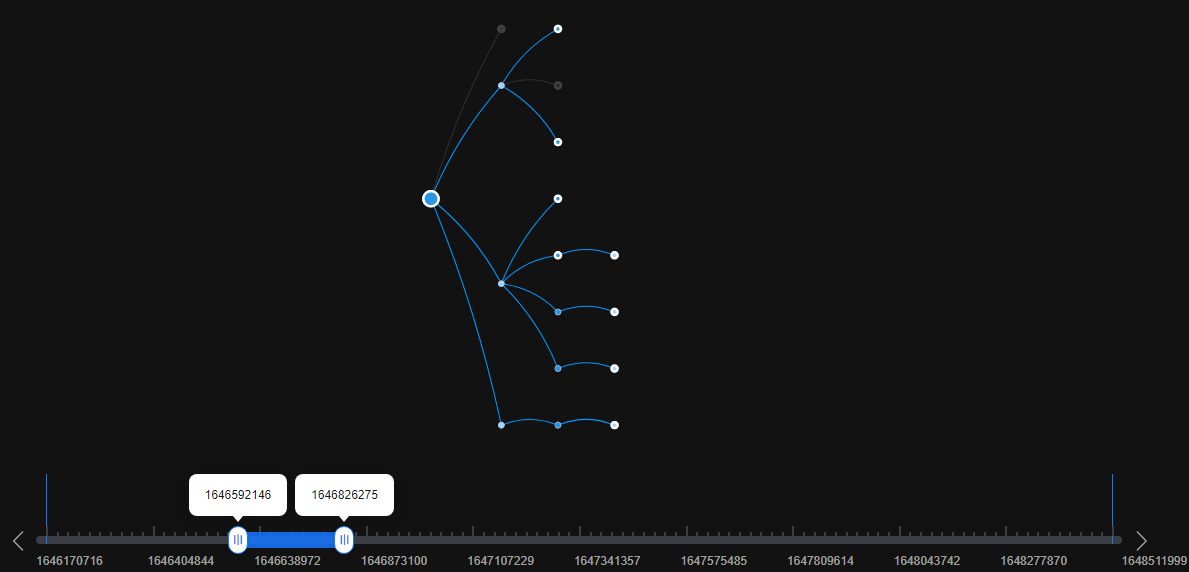Analyzing a Graph Using Temporal Path
Temporal paths that start from a vertex to the target node show the trend of increment (or non-decrement) of vertices and edges over time on the canvas. The paths follow the order of information transmission on dynamic graphs, the passing time of an edge on a path must be later than or the same as that of the previous edge.
For this function, you can use the strategy parameter to adjust whether the temporal path with the shortest distance or the temporal path that reaches the target node as early as possible is searched for.
The procedure is as follows:
- In the Temporal Paths tab of the Graph Analysis area on the left of the graph editor page, click Temporal BFS, and set the parameters in the drop-down list.
- Set the start time, end time, and their properties. For details, see Setting a Timeline. To modify the parameters, click the text box or
 in the lower left corner.
in the lower left corner. - source: ID of the start node
- targets: set of end node IDs. Multiple end node IDs can be configured.
- k: Traversal depth, indicating the maximum number of vertices in a traversal. The value ranges from 1 to 100. The default value is 3.
- strategy: execution strategy of the algorithm. The value can be shortest or foremost.
- shortest: the temporal path with the shortest distance is returned
- foremost: the temporal path that reaches the target node as early as possible is returned
- directed: Whether the traversal is performed along the directions of edges in the graph. The value can be true (default) or false.
- true: Traversal is performed along edge directions.
- false: Edge directions will not be considered in the traversal.
Figure 1 Temporal paths
- Set the start time, end time, and their properties. For details, see Setting a Timeline. To modify the parameters, click the text box or
- Click
 on the right of Temporal Paths. The execution results are displayed on the canvas. As shown in Figure 2 and Figure 3, the vertices in the dynamic graph change over time.
on the right of Temporal Paths. The execution results are displayed on the canvas. As shown in Figure 2 and Figure 3, the vertices in the dynamic graph change over time.
Feedback
Was this page helpful?
Provide feedbackThank you very much for your feedback. We will continue working to improve the documentation.See the reply and handling status in My Cloud VOC.
For any further questions, feel free to contact us through the chatbot.
Chatbot







